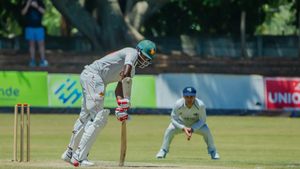On February 8, 2025, the PlayStation Network (PSN) suffered significant outages, leaving millions of gamers frustrated across the globe. The problems began just before midnight, affecting PlayStation users seeking to access online gaming, account management, and digital purchases.
DownDetector reported peaks of over 71,000 users logging issues as the outage took hold. Affected services included account management, gaming and social features, the PlayStation Store, and PlayStation Video. Major games like Fortnite, Call of Duty, and Grand Theft Auto were rendered unplayable online, disrupting gaming experiences for those hoping to participate.
Social media buzzed with reports from players unable to log in or maintain connections to their games, particularly as promotional events were underway, such as double XP weekends for titles like Call of Duty. With issues extending across platforms, including PS4, PS5, and even PlayStation VR, players were quick to highlight their growing frustrations. "Yeah, my Helldivers 2 just crashed and then the console said I had no PSN connection," stated one Reddit user.
Reports indicated the official PSN status page acknowledged the outage but largely stayed quiet, leading to user speculation about the nature and cause of the disruption. Sony’s communication via its support or social media primarily consisted of general awareness acknowledgments, failing to offer concrete timelines for resolution.
The outage expectedly drew ire from gamers, with many turning to Twitter (X) to vent about the lack of timely updates. "Is Sony ever gonna say anything?" asked one frustrated user, as the hours without service continued. While some players could still engage with offline modes, the inability to access online features rendered popular titles inaccessible to those affected.
Interestingly, this outage marked another blow to Sony, who recently faced similar issues. Just months prior, the PSN experienced downtime for hours following heavy traffic surges during game releases. Many speculated whether server overloads or even Distributed Denial of Service (DDoS) attacks contributed to this disruption, creating uncertain conditions for the gaming community uncertain of when their services would resume.
By the following morning, users were left wondering whether the outage stemmed from technical errors on Sony’s behalf or whether they might be dealing with external factors like cyberattacks. The growing trend of outages reflecting vulnerabilities within major gaming infrastructures highlights the pivotal role companies like Sony hold over the gaming experience.
This specific incident once again illuminated the urgency for clearer communication from Sony when infrastructure issues arise. Gamers depend heavily on the PlayStation infrastructure for their gaming needs, and falling short of expectations can lead to broader trust issues.
While PlayStation sought to resolve the issues, there was little clarity on the matter. Players understood they could check the PSN service status page to monitor updates and acknowledge when connectivity issues had passed. Interestingly, some had learned to utilize services like DownDetector to gauge user-reported problems, marking the lengths players go to understand when they can return online.
By the day’s close, reports suggested minor improvements were seen, but many gamers remained alert to issues still obstructing access to various services. With the gaming weekend nearly over, players eagerly looked for sign of operational stability.
Industry insiders hinted at the likelihood of extensions for access to online events and competitions occurring during the outage. For avid gamers, expectations were high for Sony to acknowledge the problems and offer resolutions expediently.
Community members shared their experiences with outages, noting how they affected plans and expectations tied to competitive gaming. With engagements, such as the UT Champions Finals occurring during the outage of EA FC 25, players’ frustrations peaked as they were barred from their game modes.
This outage echoed across communities with many reinforcing the notion of heightened awareness necessary when relying on digital services centered around entertainment. Gamer sentiments hi-lighted their ownership of digital products contrasting sharply with their inability to play due to server failures triggered by apparent frameworks behind the scenes.
With the status of the PlayStation Network still tenuous, players were left with more questions than answers as they waited for the infrastructure to return to its full capabilities. For many dedicated users, this outage was more than just inconvenience; it was a stark reminder of the dependence they place on digital gaming networks.



